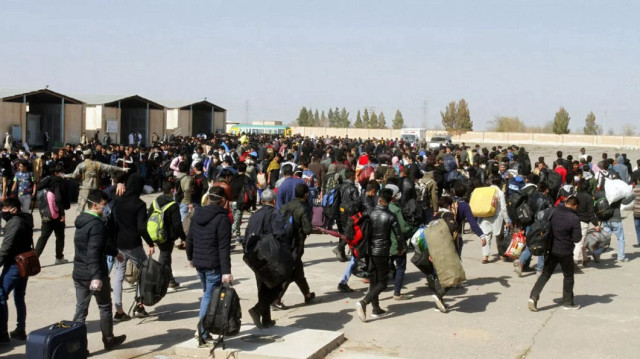Dramatic Belize Plane Hijacking Ends in Fatal Shooting
A US national onboard a small plane in Belize attempted hijacking, resulting in a fatal altercation. Explore the unfolding drama as the narrative unveils a gripping series of events.
Published April 18, 2025 - 00:04am

Image recovered from tass.com
In an unsettling turn of events in Belize, a small airplane operated by Tropic Air became the center of a high-stakes drama. The incident unfolded as a US national, identified as Akinyela Sawa Taylor, attempted to hijack the Cessna Caravan, creating panic among the 14 passengers and 2 crew members. Armed with a knife, Taylor's demands were clear: he wanted the aircraft to divert from its domestic route between Corozal and San Pedro and head out of Belize. However, the situation spiraled into a deadly confrontation, resulting in Taylor's demise.
The hijacking began with Taylor brandishing a knife, threatening those on board. As the plane circled the Belizean airspace, contacting the control tower for guidance, Taylor demonstrated erratic behavior, seemingly motivated to escape the country's borders. His actions led to a significant emergency response as the airplane hovered over densely populated areas, eventually causing significant concern about fuel depletion.
As the plane circled over Belize City, tensions escalated with the hijacker's aggression towards the crew and passengers. Reports indicate that Taylor's situation intensified as the plane ran low on fuel, highlighting the urgency to land safely at the Philip S. W. Goldson International Airport in Belize City. His demands grew precarious as passengers and crew faced imminent danger from his violent threats.
As the unfolding events took a critical turn, those onboard started executing survival strategies. While Taylor's aggressive conduct saw him injure three individuals, including the pilot, it also set the scene for a heroic intervention. As the aircraft made its final approach, dangerously close to exhausting its fuel supply, a quick-thinking passenger with a license to carry a firearm took matters into his hands. This licensed passenger ultimately shot Taylor, curbing the hijack attempt as the plane touched down safely.
The emergency services on the ground were swift in their response when the plane landed. Taylor, alongside other injured passengers, was rushed to the hospital; however, he succumbed to the gunshot wounds. The passenger who shot Taylor became a subject of intensive medical care due to severe injuries sustained from the confrontation, underscoring the precariousness of his intervention.
Post-incident investigations revealed Taylor to be a US citizen and reportedly a military veteran. His previous profession as a teacher and his unexpected presence in Belize raised questions about his motive and preparedness for such an action. As Belizean police delved deeper into Taylor's background, issues of security at smaller airstrips surfaced. Concerns about how he managed to carry a knife onboard were integral to understanding the shortcomings that facilitated the hijack attempt.
In a rapidly developing situation, efforts to comprehend Taylor's mental state and prior actions continued as law enforcement liaised with the US Embassy to piece together more information. Repercussions from the event rippled through Belize and neighboring regions, highlighting vulnerabilities in aviation security and the urgent need for robust checks at private and smaller airports.
Public reaction to the incident echoed concerns about aviation safety and the growing threats posed by such acts. The flight belonged to a route popular with American tourists, adding international interest and urgency to the inquiry. Though the situation was contained with minimal casualties, its occurrence signified a deeper security complexity, calling for renewed discourse on passenger safety practices and flight operation protocols.
This incident of airplane hijacking in Belize marked one of the most serious aviation-related crimes in recent regional history. Authorities remain vigilant, hoping that such distressing actions do not repeat, while addressing outlined security flaws and enhancing measures to protect the skies from similar threats.






